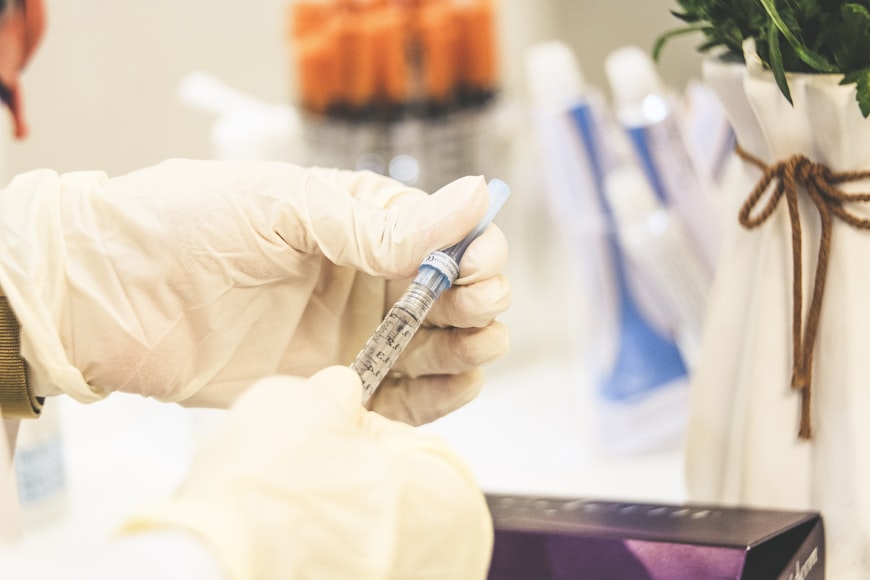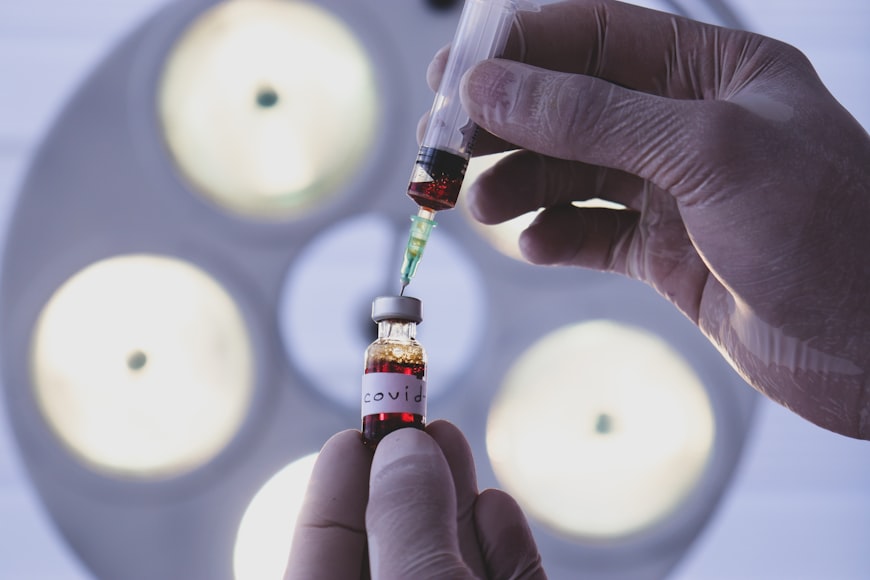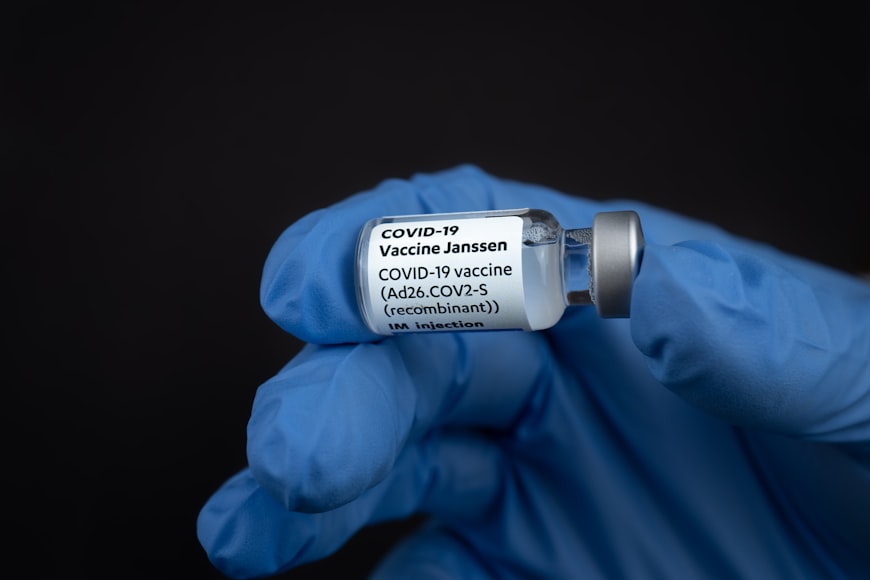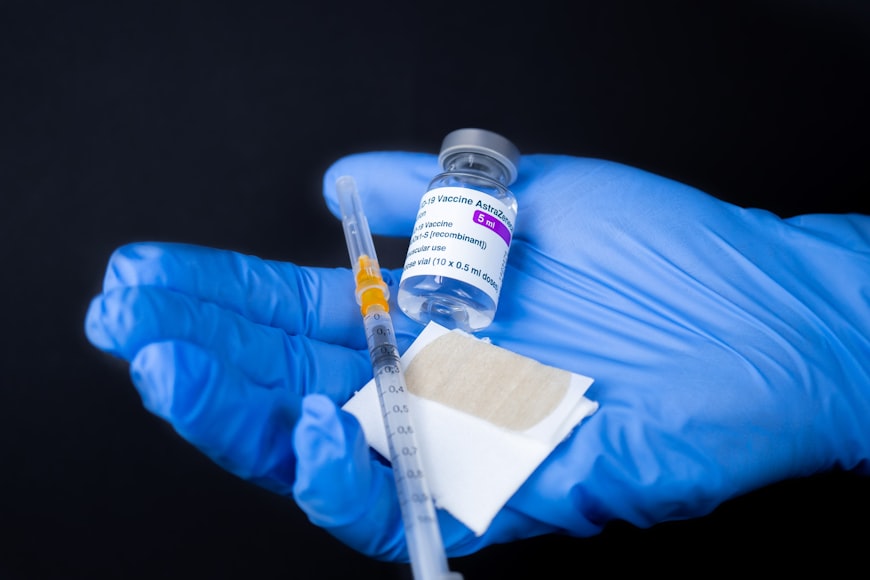Cytopoint Injection: A Comprehensive Guide

Introduction
Cytopoint Injection is a revolutionary treatment for dogs suffering from allergic dermatitis, a prevalent and debilitating skin condition caused by allergens from the environment, such as pollens, dust mites, and mold spores. This article provides a comprehensive guide to Cytopoint Injection, explaining its mechanism of action, benefits, administration, and potential side effects.
Mechanism of Action
Cytopoint Injection is a monoclonal antibody that targets and neutralizes interleukin-31 (IL-31), a cytokine responsible for triggering the itching and inflammation associated with allergic dermatitis. By blocking IL-31, Cytopoint suppresses the immune response and alleviates the clinical signs of the condition.
Benefits of Cytopoint Injection
Cytopoint Injection offers several key benefits for dogs with allergic dermatitis:
- Fast-acting: Cytopoint takes effect within 24-48 hours of injection, providing quick relief from itching and inflammation.
- Long-lasting: The injection typically provides 4-8 weeks of relief, significantly reducing the frequency and severity of allergic flare-ups.
- Convenient: Cytopoint is administered as a subcutaneous injection, making it easy and convenient to administer at home.
- Safe: Cytopoint has been extensively studied and proven to be safe for dogs of all ages and breeds.
Administration
Cytopoint Injection is administered by your veterinarian as a subcutaneous injection under the skin. The injection site should be cleaned beforehand to prevent infection. The dose is based on the dog’s weight and is typically repeated every 4-8 weeks as needed.
Potential Side Effects
Like any medication, Cytopoint Injection can have potential side effects, although they are generally mild and uncommon. Possible side effects include:
- Injection site reactions (e.g., pain, swelling, redness)
- Mild gastrointestinal upset
- Allergic reactions (very rare)
Contraindications
Cytopoint Injection is not recommended for dogs with known hypersensitivity to the medication or its components. It should also be used cautiously in dogs with certain underlying health conditions, such as autoimmune disorders or immunosuppression.
Conclusion
Cytopoint Injection is a valuable treatment option for dogs suffering from allergic dermatitis. By effectively blocking the IL-31 cytokine, Cytopoint provides rapid and long-lasting relief from itching and inflammation, improving their quality of life and making it easier for them to enjoy their daily activities. If your dog exhibits signs of allergic dermatitis, consult your veterinarian to determine if Cytopoint Injection is an appropriate treatment option.
Introduction

Introduction
Cytopoint is a revolutionary monoclonal antibody injection that has transformed the management of canine atopic dermatitis. Atopic dermatitis is a common and chronic inflammatory skin condition in dogs that causes intense itching, redness, and skin irritation. Cytopoint targets a specific molecule involved in the allergic response, providing rapid and long-lasting relief from the debilitating symptoms of atopic dermatitis.
Purpose of Cytopoint Injection
The purpose of Cytopoint injection is to block the effects of interleukin-31 (IL-31), a cytokine that plays a crucial role in the development of canine atopic dermatitis. IL-31 stimulates the release of histamine and other inflammatory mediators, leading to the characteristic symptoms of the condition.
By binding to IL-31, Cytopoint blocks its interaction with receptors on skin cells, effectively interrupting the allergic cascade and suppressing inflammation. This blockade results in significant improvements in clinical signs, including:
- Reduced itching: Cytopoint injections provide rapid and sustained relief from the relentless itching associated with atopic dermatitis.
- Decreased skin inflammation: The injection helps to calm the inflammatory response in the skin, reducing redness, swelling, and irritation.
- Improved skin barrier function: Cytopoint injections support the repair of the skin’s natural barrier, making it less susceptible to allergens and irritants.
Mechanism of Action
Cytopoint is a monoclonal antibody, which means it is a highly specific protein that recognizes and binds to a single target molecule. In this case, the target molecule is IL-31. When Cytopoint binds to IL-31, it prevents it from interacting with the IL-31 receptors on skin cells.
By blocking the IL-31 signaling pathway, Cytopoint effectively suppresses the inflammatory response that drives atopic dermatitis. The injection does not affect other immune pathways or the body’s overall response to pathogens.
Administration and Efficacy
Cytopoint injections are typically administered every 4-8 weeks, depending on the individual dog’s response to treatment. The injection is given subcutaneously, usually in the shoulder or thigh.
Studies have shown that Cytopoint provides significant and sustained relief from atopic dermatitis symptoms in a majority of dogs. In clinical trials, over 70% of dogs treated with Cytopoint experienced a reduction in itching intensity and an improvement in skin lesions.
Safety Considerations
Cytopoint has been extensively tested and found to be safe for use in dogs. The most common side effects reported are mild and transient, such as injection site reactions or digestive upset.
Cytopoint is not recommended for use in dogs under 12 months of age, pregnant or nursing dogs, or dogs with a known hypersensitivity to the active ingredient.
Conclusion
Cytopoint is a groundbreaking treatment for canine atopic dermatitis. By targeting the IL-31 cytokine, Cytopoint injections effectively block the allergic response and provide rapid and long-lasting relief from the debilitating symptoms of this condition. With its high efficacy, safety, and ease of administration, Cytopoint has become an essential tool in the management of canine atopic dermatitis, significantly improving the quality of life for countless dogs and their owners.
Mechanism of Action

Cytopoint is a revolutionary monoclonal antibody treatment specifically designed to alleviate the distressing symptoms associated with atopic dermatitis (AD) in dogs. Its remarkable efficacy stems from its targeted mechanism of action that selectively neutralizes a key inflammatory mediator known as interleukin-31 (IL-31).
Interleukin-31: A Central Mediator of Itch
IL-31, produced by activated immune cells, plays a crucial role in the development of AD. This cytokine directly targets sensory neurons, particularly those expressing the IL-31 receptor A (IL-31RA), resulting in an intense and persistent itching sensation.
The relentless itching associated with AD significantly impacts the quality of life for dogs, causing restlessness and discomfort. It can interfere with their sleep, daily activities, and relationship with their owners.
Cytopoint’s Selective Targeting of IL-31
Cytopoint is a humanized monoclonal antibody engineered to bind with high affinity to IL-31. By effectively neutralizing IL-31, Cytopoint disrupts the signaling pathway responsible for triggering itch.
This targeted approach allows Cytopoint to effectively suppress the itching sensation without compromising the immune system’s ability to respond to other threats.
Administration and Efficacy
Cytopoint is administered as a subcutaneous injection, providing rapid and sustained relief. Its effects can be observed within 24-48 hours and last for approximately 4-8 weeks.
Clinical trials have demonstrated the exceptional efficacy of Cytopoint in controlling AD symptoms. Dogs treated with Cytopoint experienced significant reductions in itching, scratching behaviors, and skin inflammation.
Advantages of Cytopoint
Compared to traditional anti-itch medications, Cytopoint offers several advantages:
- Rapid and Long-Lasting Relief: Cytopoint provides quick and sustained relief from itching, allowing dogs to enjoy prolonged periods of comfort.
- Targeted Mechanism: By selectively targeting IL-31, Cytopoint avoids the potential side effects associated with broad-spectrum immunosuppressive therapies.
- Safety and Tolerability: Cytopoint has been extensively tested and proven to be safe and well-tolerated in dogs of all ages and breeds.
- Flexibility: Cytopoint can be used as part of a comprehensive treatment plan alongside other therapies, such as antihistamines or topical medications.
Conclusion
Cytopoint is a game-changer in the management of atopic dermatitis in dogs. Its targeted mechanism of action against IL-31 effectively suppresses the itching sensation, providing significant relief and improving their overall well-being.
As a safe, effective, and long-lasting treatment, Cytopoint empowers veterinarians to offer their canine patients a renewed lease on life by alleviating the discomfort and misery associated with AD.
Indications for Use

Allergic dermatitis, atopic dermatitis, and environmental allergies are common skin conditions that can cause significant discomfort and affect daily life. Understanding the indications for use of appropriate treatments is crucial for effective management and symptom relief.
Allergic Dermatitis
Allergic dermatitis, also known as contact dermatitis, is an inflammatory skin reaction that occurs when the skin comes into contact with an allergen. Common allergens include nickel, latex, perfumes, cosmetics, and certain plants.
Indications for Use:
- Topical corticosteroids: Low- to medium-potency corticosteroids are typically the first-line treatment for allergic dermatitis. They reduce inflammation and itching.
- Calamine lotion: Calamine lotion can soothe skin irritation and help reduce itching.
- Antihistamines: Oral antihistamines can block the effects of histamine, a chemical released during allergic reactions that causes itching and swelling.
- Avoidance of allergen: The most effective treatment is to avoid contact with the allergen causing the allergic dermatitis.
Atopic Dermatitis
Atopic dermatitis, also known as eczema, is a chronic skin condition characterized by dry, itchy, and inflamed skin. It is often associated with a family history of allergies and asthma.
Indications for Use:
- Topical corticosteroids: Topical corticosteroids are commonly used to treat atopic dermatitis. They reduce inflammation and itching.
- Emollients: Emollients help moisturize and soften the skin, reducing dryness and irritation.
- Antihistamines: Oral antihistamines can help reduce itching, especially at night.
- Immunosuppressants: Systemic immunosuppressants may be prescribed in severe cases to suppress the immune system and reduce inflammation.
- Biologics: Biologics are targeted therapies that block specific inflammatory molecules in the body. They are used for severe atopic dermatitis that does not respond to other treatments.
Environmental Allergies
Environmental allergies are allergic reactions to substances found in the environment, such as pollen, dust mites, and pet dander. These allergies can cause symptoms such as sneezing, runny nose, itchy eyes, and wheezing.
Indications for Use:
- Nasal corticosteroids: Nasal corticosteroids are often the first-line treatment for environmental allergies. They reduce inflammation and swelling in the nasal passages.
- Antihistamines: Oral antihistamines can block histamine, reducing symptoms such as sneezing, itching, and watery eyes.
- Nasal decongestants: Nasal decongestants can help reduce congestion and improve breathing.
- Avoidance of allergen: Avoiding contact with the allergen is the most effective way to prevent allergy symptoms.
- Immunotherapy: Immunotherapy involves gradually exposing a person to the allergen in controlled doses to build up tolerance.
Conclusion
Allergic dermatitis, atopic dermatitis, and environmental allergies are common skin and allergy conditions that can significantly impact individuals’ quality of life. Understanding the indications for use of appropriate treatments is essential for effective management and symptom relief. By carefully following treatment recommendations and avoiding potential allergens, individuals can reduce their discomfort and improve their overall health and well-being.
Dosage and Administration

Recommended Dose Schedule
The recommended dose and schedule for injectable medications vary depending on the specific drug, the intended use, and the patient’s individual characteristics. It is crucial to follow the doctor’s instructions carefully to ensure optimal therapeutic outcomes and minimize potential risks.
Generally, the following factors should be considered when determining the dosage and schedule:
- Indication: The reason for administering the medication (e.g., pain relief, infection treatment)
- Severity of condition: The severity of the underlying condition being treated
- Patient’s age, weight, and renal function: These factors can affect the clearance and elimination of the medication
- Concomitant medications: Interactions with other medications may necessitate adjustments in dosage
The doctor will determine the appropriate dose and schedule based on the patient’s specific situation. It is important to adhere to the prescribed schedule and to avoid altering the dosage without medical advice.
Injection Technique
Proper injection technique is essential for both the safety and effectiveness of injectable medications. It ensures that the medication is delivered accurately to the desired site and that any adverse effects are minimized.
Subcutaneous Injection:
- Clean the injection site with an alcohol swab.
- Pinch the skin at the injection site to form a tent.
- Insert the needle into the subcutaneous tissue at a 45-degree angle, bevel side up.
- Aspirate to ensure that no blood is drawn into the syringe.
- Inject the medication slowly and steadily.
- Remove the needle and apply pressure to the injection site.
Intramuscular Injection:
- Clean the injection site with an alcohol swab.
- Stretch the skin taut at the injection site.
- Insert the needle perpendicular to the skin at a 90-degree angle.
- Aspirate to ensure that no blood is drawn into the syringe.
- Inject the medication slowly and steadily.
- Withdraw the needle and apply pressure to the injection site.
Intravenous Injection:
- Clean the injection site with an alcohol swab.
- Place a tourniquet above the injection site to make the vein more prominent.
- Insert the needle into the vein at a 15-30 degree angle, bevel side up.
- Aspirate to ensure that blood is drawn into the syringe.
- Inject the medication slowly and steadily.
- Remove the needle and apply pressure to the injection site.
Note:
- Use aseptic technique throughout the injection process to prevent infection.
- Use the appropriate needle size and length for the injection site.
- Dispose of needles and syringes properly after use.
- Report any adverse effects or unusual reactions to the doctor immediately.
Additional Considerations
- Some medications may be administered through multiple routes (e.g., subcutaneous, intramuscular, intravenous). The doctor will determine the most appropriate route based on the drug’s properties and the patient’s condition.
- In some cases, patients may be trained to self-administer injectable medications at home. This requires proper instruction and supervision.
- Regular monitoring of medication levels and therapeutic effects may be necessary to optimize treatment.
Conclusion
Dosage and administration of injectable medications play a vital role in achieving optimal therapeutic outcomes. By understanding the recommended dose schedule and implementing proper injection techniques, healthcare professionals can ensure the safe and effective administration of injectable medications. Patients should adhere to the doctor’s instructions and report any adverse effects or concerns promptly.
Safety and Side Effects
Understanding the Risks and Benefits
[Medication Name] is a prescription medication used to treat [condition]. Like all medications, it has potential side effects and contraindications that should be considered before taking it.
Common Side Effects
The most common side effects associated with [Medication Name] include:
- Nausea
- Vomiting
- Diarrhea
- Constipation
- Headache
- Dizziness
- Drowsiness
- Dry mouth
- Blurred vision
These side effects are typically mild and subside within a few days or weeks. However, if you experience any severe or persistent side effects, it is crucial to consult your doctor immediately.
Contraindications
[Medication Name] is contraindicated in individuals with certain medical conditions or allergies:
- Liver disease
- Kidney disease
- Heart disease
- Allergies to [Medication Name] or similar medications
Additionally, [Medication Name] should not be taken by:
- Pregnant women
- Breastfeeding women
- Children under the age of [age]
Precautions
Before taking [Medication Name], it is important to inform your doctor about any other medications you are taking, as it may interact with them.
Alcohol use should be avoided while taking [Medication Name] as it can increase the risk of side effects, particularly drowsiness and dizziness.
Avoid driving or operating heavy machinery until you know how [Medication Name] affects you.
Long-Term Effects
Long-term use of [Medication Name] may increase the risk of certain health problems, including:
- Liver damage
- Kidney damage
- Bone loss
- Cataracts
It is crucial to follow your doctor’s instructions carefully and to report any side effects or concerns promptly.
Monitoring and Management
To ensure your safety and minimize side effects, your doctor may recommend:
- Regular blood tests to monitor liver and kidney function
- Eye exams to check for cataracts
- Bone density scans to assess bone health
Alternative Treatment Options
If you are concerned about the potential side effects of [Medication Name], discuss alternative treatment options with your doctor. These may include lifestyle modifications, over-the-counter medications, or other prescription medications.
Conclusion
[Medication Name] can be an effective treatment for [condition], but it is essential to be aware of its potential side effects and contraindications. By carefully considering the risks and benefits and adhering to your doctor’s instructions, you can minimize side effects and optimize the benefits of medication.
If you have any concerns or experience any side effects, do not hesitate to contact your healthcare provider.
Duration of Efficacy
Introduction
The duration of efficacy is an important consideration when evaluating the effectiveness of any medical intervention, whether it’s a medication, a treatment, or a surgical procedure. It refers to the time frame over which a particular intervention maintains its therapeutic benefits. Understanding the duration of efficacy is crucial for optimizing treatment outcomes, determining dosing schedules, and managing expectations.
Onset of Action
The onset of action refers to the time it takes for a medication or treatment to produce its noticeable effects. It can vary widely depending on the route of administration, the formulation of the drug, and individual patient factors. For example, intravenous medications typically have a faster onset of action than oral medications, and fast-acting formulations may have a quicker onset than sustained-release formulations.
Duration of Effect
The duration of effect refers to the length of time that a medication or treatment continues to exert its therapeutic benefits. It is influenced by various factors, including the pharmacokinetics of the drug, the dosage, and the underlying condition being treated. For example, a short-acting medication may have a duration of effect of only a few hours, while a long-acting medication may last for days or weeks.
Importance of Duration of Efficacy
Knowing the duration of efficacy is essential for making informed decisions about treatment. It can help clinicians:
- Determine the appropriate dosing schedule and duration of therapy
- Monitor the effectiveness of treatment and adjust the dosage or treatment regimen as needed
- Manage patient expectations and avoid unnecessary side effects
- Identify potential drug interactions and avoid overmedication
Factors Affecting Duration of Efficacy
Numerous factors can influence the duration of efficacy, including:
- Pharmacokinetics: The body’s absorption, distribution, metabolism, and excretion of the drug, which determine how long it remains in the body.
- Dosage: The amount of drug administered can affect the duration of its effect. Higher doses may result in a longer duration of action.
- Route of administration: The way in which the drug is given (e.g., oral, intravenous, topical) can impact its bioavailability and, thus, its duration of effect.
- Condition being treated: The underlying medical condition can influence the effectiveness and duration of the treatment. For example, a medication may have a shorter duration of effect in severe conditions than in milder conditions.
- Individual patient factors: Age, weight, metabolism, and co-existing medical conditions can all affect the duration of efficacy.
Conclusion
The duration of efficacy is a key consideration in the evaluation of medical interventions. Understanding the onset of action and duration of effect of a particular treatment allows clinicians to optimize dosing schedules, monitor effectiveness, and manage patient expectations. By carefully considering the factors that influence the duration of efficacy, healthcare professionals can ensure that patients receive the most appropriate and effective treatment for their condition.
Comparison to Other Therapies
Canine atopic dermatitis (CAD) is a common allergic skin condition that can cause significant discomfort and distress in dogs. While there are various treatment options available, the efficacy and safety of different therapies vary. This article explores the advantages and disadvantages of Cytopoint, an injectable monoclonal antibody, compared to two other commonly used therapies for CAD: antihistamines and corticosteroids.
Cytopoint
Cytopoint is a monoclonal antibody that targets interleukin-31 (IL-31), a cytokine involved in the inflammatory response. By blocking IL-31, Cytopoint reduces itching and inflammation associated with CAD.
Advantages of Cytopoint:
- Rapid onset of action: Cytopoint provides fast and effective relief from itching within 24-48 hours.
- Sustained efficacy: A single Cytopoint injection typically provides relief for up to 4-8 weeks, reducing the need for frequent dosing.
- Minimal side effects: Cytopoint is generally well-tolerated with minimal side effects.
Disadvantages of Cytopoint:
- Higher cost: Cytopoint can be more expensive than other treatment options.
- Requires veterinary administration: Cytopoint injections must be administered by a veterinarian, which may limit accessibility and convenience.
Antihistamines
Antihistamines block histamine, a chemical that is released during allergic reactions and triggers itching.
Advantages of antihistamines:
- Widely available: Antihistamines are easily accessible over-the-counter.
- Relatively inexpensive: Antihistamines are generally less expensive than other treatment options.
Disadvantages of antihistamines:
- Variable efficacy: Antihistamines may not be effective for all dogs with CAD.
- Limited duration of action: Antihistamines typically provide shorter-term relief than Cytopoint, requiring more frequent dosing.
- Potential side effects: Antihistamines can cause drowsiness and other side effects in some dogs.
Corticosteroids
Corticosteroids are potent anti-inflammatory drugs that suppress the immune system.
Advantages of corticosteroids:
- Highly effective: Corticosteroids can provide significant relief from itching and inflammation.
- Versatile: Corticosteroids can be administered orally, topically, or by injection.
Disadvantages of corticosteroids:
- Significant side effects: Long-term use of corticosteroids can lead to serious side effects, including weight gain, diabetes, and adrenal gland suppression.
- Not suitable for long-term use: Corticosteroids are not generally recommended for long-term management of CAD due to potential side effects.
Choosing the Most Appropriate Therapy
The best treatment option for CAD will vary depending on the individual dog and the severity of the condition. It is important to consult with a veterinarian to determine the most appropriate therapy based on factors such as:
- Severity of the itching and inflammation
- Age and overall health of the dog
- Cost considerations
- Owner’s preference
Cytopoint may be a suitable option for dogs that:
- Experience severe itching and inflammation
- Require long-term relief
- Do not tolerate or respond well to antihistamines or corticosteroids
Antihistamines may be a reasonable option for dogs that:
- Experience mild to moderate itching
- Require short-term relief
- Are cost-conscious
Corticosteroids may be considered for dogs that:
- Experience severe itching and inflammation that does not respond to other therapies
- Need immediate relief
- Are willing to accept the potential side effects
Conclusion
Cytopoint, antihistamines, and corticosteroids are all viable treatment options for canine atopic dermatitis, each with its own advantages and disadvantages. Cytopoint offers rapid and sustained relief with minimal side effects, but it can be more expensive and requires veterinary administration. Antihistamines are accessible and affordable, but their efficacy and duration of action may be limited. Corticosteroids are highly effective but can have significant side effects with long-term use. By understanding the pros and cons of each therapy, veterinarians and pet owners can make informed decisions about the most appropriate treatment for their individual dogs.
Storage and Handling
Sensitive materials encompass various substances that require precise storage and handling conditions to maintain their stability, effectiveness, and safety. These materials can range from hazardous chemicals and explosives to delicate electronics and biological specimens. Improper storage and handling can lead to degradation, damage, or even accidents, underscoring the critical importance of adhering to specific protocols.
Storage Requirements
- Climate-controlled environment: Sensitive materials often have specific temperature and humidity requirements to preserve their integrity. For instance, biological samples may need to be refrigerated or frozen to prevent spoilage, while electronic devices may require temperature regulation to avoid overheating.
- Darkness: Light can cause degradation or discoloration in some materials. Dark storage areas, such as cabinets or opaque containers, should be employed to protect these materials from exposure.
- Dryness: Moisture can damage many materials by causing corrosion, rust, or mold growth. Storage areas should be kept dry and well-ventilated to prevent moisture accumulation.
- Security: Some sensitive materials may pose safety risks, requiring secure storage to prevent unauthorized access or theft. Safe storage options include locked cabinets, restricted areas, and security cameras.
- Proper containers: Materials should be stored in suitable containers that protect their contents from physical damage, contamination, and spills.
Handling Precautions
- Wear appropriate personal protective equipment (PPE): When handling hazardous materials, wear gloves, protective clothing, respirators, or other PPE as necessary to minimize exposure to potential hazards.
- Handle with care: Avoid dropping, banging, or otherwise mishandling sensitive materials, as this can cause damage or contamination. Use proper handling equipment, such as forceps or tongs, to ensure safe handling.
- Avoid contact with incompatible substances: Some materials may react violently or dangerously when combined with others. Always consult safety data sheets (SDSs) to identify incompatible substances and take necessary precautions.
- Dispose of properly: Follow established disposal protocols when discarding sensitive materials. This may involve specialized waste disposal services or adhering to specific regulations to ensure environmental safety.
- Train personnel: Ensure that all personnel handling sensitive materials are adequately trained on storage and handling procedures, safety protocols, and emergency response plans.
Consequences of Improper Storage and Handling
Failure to adhere to proper storage and handling practices can have severe consequences:
- Material degradation: Improper storage conditions can lead to degradation or loss of potency in sensitive materials, rendering them ineffective or even harmful.
- Safety hazards: Improper handling of hazardous materials can increase the risk of accidents, such as fires, explosions, or chemical spills.
- Environmental damage: Improper disposal of sensitive materials can pollute the environment, posing risks to wildlife and human health.
- Legal liability: Failure to comply with storage and handling regulations can result in legal consequences, including fines or criminal charges.
Conclusion
Proper storage and handling of sensitive materials are essential to maintain their integrity, ensure safety, and prevent damage or accidents. By adhering to established protocols and taking appropriate precautions, organizations and individuals can mitigate risks and protect both human health and the environment. Regular monitoring, training, and compliance with regulations are crucial to ensure that sensitive materials are stored and handled responsibly throughout their life cycle.
Patient Monitoring
Patient monitoring is an integral aspect of healthcare, playing a crucial role in ensuring patient safety, optimizing treatment efficacy, and minimizing adverse side effects. By closely observing and evaluating a patient’s condition, healthcare providers can make informed decisions regarding ongoing care, identify potential complications, and intervene promptly when necessary.
Importance of Monitoring for Side Effects
One of the primary objectives of patient monitoring is to vigilantly identify and manage potential side effects of medications or therapies. Side effects, also known as adverse drug reactions (ADRs), can range from mild to severe, and their presence can significantly impact a patient’s overall well-being and quality of life.
Mechanisms of Side Effects
Side effects can arise from various mechanisms, including:
- Drug-drug interactions
- Individual allergies or sensitivities
- Overdosing or incorrect administration
- Genetic factors that influence drug metabolism
Consequences of Unmanaged Side Effects
Uncontrolled or untreated side effects can lead to a cascade of negative consequences for patients, including:
- Increased morbidity and mortality
- Impaired quality of life
- Prolonged hospital stays
- Additional healthcare expenses
- Reduced patient adherence to treatment plans
Types of Patient Monitoring for Side Effects
To effectively detect and manage side effects, healthcare providers employ a range of monitoring techniques, such as:
- Regular Physical Examinations: Visual inspections, palpation, and auscultation can reveal telltale signs of side effects, such as skin rashes, swelling, or abnormal heart sounds.
- Laboratory Tests: Blood and urine tests can assess changes in liver function, kidney function, blood cell counts, and electrolyte levels, indicating potential side effects.
- Patient Interviews: Open-ended conversations with patients allow them to report subjective symptoms, such as headache, nausea, or dizziness.
- Patient Diaries: Patients can track their symptoms, medications, and any perceived changes over time, providing valuable information for healthcare providers to review.
- Telemedicine and Remote Monitoring: Technological advancements enable healthcare providers to monitor patients remotely, making it easier for patients to report side effects and receive guidance as needed.
Benefits of Effective Patient Monitoring
Regular patient monitoring ensures that side effects are detected early, allowing for timely interventions to:
- Prevent serious complications
- Adjust medication dosages or switch to alternative therapies
- Provide supportive care to alleviate symptoms
- Educate patients about potential side effects and empower them to report any concerns promptly
- Improve overall patient safety and satisfaction
Patient Responsibilities in Monitoring
Patients also play an active role in monitoring for side effects. They should:
- Be aware of the potential side effects of their medications and therapies.
- Report any symptoms or concerns to their healthcare providers immediately.
- Follow medication instructions accurately and do not adjust dosages without consulting a healthcare professional.
- Keep a record of their symptoms and medications to facilitate monitoring.
- Ask questions and seek clarification regarding any side effects or changes in their condition.
Conclusion
Patient monitoring is a vital component of healthcare, with particular importance in preventing and managing side effects of medications and therapies. By vigilantly observing patients, healthcare providers can identify and intervene in a timely manner, minimizing adverse outcomes, improving overall care, and empowering patients to be active participants in their own health. Regular patient monitoring is a key pillar of safe and effective healthcare, ensuring that patients receive the best possible outcomes while minimizing potential risks.
Client Communication
Introduction
Communication plays a pivotal role in veterinary medicine, especially when introducing new treatments like Cytopoint. Open and informative dialogue with clients ensures their understanding, compliance, and ultimately, the best possible outcomes for their beloved pets. This article aims to provide a comprehensive guide for veterinary professionals on effectively communicating with clients about Cytopoint, its benefits, and managing expectations.
What is Cytopoint?
Cytopoint is a revolutionary injectable medication that targets and blocks interleukin-31 (IL-31), a key mediator in allergic reactions in dogs. By neutralizing IL-31, Cytopoint effectively alleviates itching and discomfort caused by various allergic conditions, including atopic dermatitis (environmental allergies), flea allergies, and food allergies.
Benefits of Cytopoint for Pets
- Rapid Symptom Relief: Cytopoint provides fast-acting relief within a few hours, significantly reducing itching and skin irritation.
- Long-Lasting Efficacy: A single Cytopoint injection can provide relief for up to 8 weeks, eliminating the need for daily medications.
- Improved Quality of Life: By controlling itching and inflammation, Cytopoint allows pets to enjoy a more comfortable and active lifestyle.
- Reduced Medication Burden: Cytopoint may reduce the need for other antihistamines or steroids, simplifying medication regimens.
- Safe and Well-Tolerated: Cytopoint has been shown to be safe and well-tolerated in most dogs, with minimal side effects.
Managing Expectations: Efficacy and Safety
While Cytopoint is highly effective in controlling allergic symptoms, it is crucial to manage client expectations appropriately.
Efficacy:
- Discuss that Cytopoint is not a cure for allergies but provides symptomatic relief.
- Explain that the individual response may vary, and some dogs may require additional therapy or allergen avoidance strategies.
- Emphasize the importance of regular re-injections to maintain efficacy.
Safety:
- Reassure clients that Cytopoint has been extensively studied and found to be safe for most dogs.
- Mention the potential for mild side effects, such as injection site irritation or vomiting, but emphasize that these are typically transient.
- Discuss contraindications and precautions, such as active infections or underlying medical conditions that may affect Cytopoint’s safety.
Communicating with Clients
Effective communication includes the following steps:
- Listen attentively: Understand the client’s concerns, symptoms, and experiences with their pet’s allergies.
- Provide clear and concise information: Explain Cytopoint’s mechanism of action, benefits, and limitations.
- Use visual aids: Show clients before-and-after images or videos to demonstrate the potential effects of Cytopoint.
- Answer questions thoroughly: Address all client inquiries to build trust and understanding.
- Provide written instructions: Supplement verbal communication with written handouts or online resources that reiterate key information about Cytopoint.
Follow-up
Regular follow-up is crucial to monitor Cytopoint’s effectiveness and address any concerns.
- Schedule follow-up appointments at appropriate intervals to assess the pet’s response and adjust the treatment plan as needed.
- Encourage clients to contact the clinic immediately if they notice any unusual symptoms or if the pet’s condition worsens.
- Provide ongoing support and guidance to help clients manage their pet’s allergies effectively.
Conclusion
Effective client communication is essential for ensuring successful use of Cytopoint in treating allergic dogs. By providing accurate information about the drug’s benefits, managing expectations regarding efficacy and safety, and fostering ongoing communication, veterinary professionals can empower clients to make informed decisions and achieve optimal outcomes for their beloved companions.




















